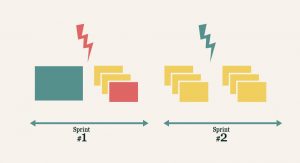It’s a trend affecting every industry and sector: the generational shift that is occurring as Millennials increasingly outnumber Gen-Xers and Baby Boomers is a complex topic that cannot be ignored. From marketing to healthcare, from financial services to, of course, technology, this paradigm shift requires serious evaluation of process, engagement, and communication.
Perhaps more complex than any of those, though, is the matter of overcoming the challenges of generation gaps in the workplace. Hiring, engaging, and retaining a staff of talented individuals in a way that successfully spans the generations is essential to any growing business.
The Challenges of Generation Gaps in the Workplace
It’s a challenge with multiple layers. Millennials number more than a quarter of the US population, surpassing both previous generations, while Baby Boomers are simultaneously pushing the retirement age past its norm. Not only is there a wider range of ages in the workplace, but the rapid technological changes of the last couple of decades has impacted the values, work styles, and communication preferences of the youngest workers in more profound ways than previous societal progression affected the older generations in their youth.
It’s for this reason that Millennials frequently find themselves plagued with stereotypes. Among those are the ideas that they don’t like to be managed, they’re job hoppers, and they’re entitled, lazy, and self-centered. Of course, biases abound for Gen X and Baby Boomers, as well, and they are often stereotypically characterized by their lack of technical savvy, their rigid work preferences, and for being long-term, money-motivated careerists.
One study suggests that the biggest failure businesses make in trying to bridge this gap is relying too heavily on these vague generational stereotypes. However, when each generation spans a wide 20 years, that’s a lot of space for diversity within each age range; evidence that stereotypes simply cannot be relied upon to create one-size-fits-all solutions.
The Benefits of a Multi Generation Workplace
Once you get past the stereotypes, biases, and potential conflicts, the benefits of nurturing a richly diverse, multi-generation work environment are numerous.
The first major advantage is a no-brainer: the simple concept of knowledge transfer is a powerful benefit of successful engagement between generations. Whether your business is built upon decades of experience or merely a handful of years, your success, growth, and productivity are fully dependent on the people you have working for you. The more perspectives your team can bring to the table, the more likely you are to hit upon a formula that fosters future growth.
Older generations have seen the ups and downs of business that naturally occur over the years, while younger generations can share their understanding of current trends like digitalization. This kind of knowledge transfer, if valued and encouraged, can really drive innovation in the workplace. Decisions your company has to make will be based upon a wider range of perspectives, which inevitably makes those decisions stronger and more effective.
Leading a Cross Generational Workplace
Nurturing the unique dynamic that results from a multi-generational workforce takes strategic leadership. It’s important to realize that conflict most often arises when people aren’t even aware of their own judgements and stereotyping of their fellow coworkers. This means that communication is the foundational element of a successful intergenerational workplace. And it must occur at every stage in the employee lifecycle, from onboarding new employees, to engaging and retaining them throughout their career with you.
Initiate conversation with your staff and make sure both they and you are aware of any biases. It’s important to pinpoint what the real differences are, so don’t hesitate to ask about needs, motivations and preferences. While similarities between generations are more common than you may think, it is critical to understand that while Millennials are notoriously hopeful, Gen-Xers may be more skeptical; and while Gen-Xers are typically more self-reliant, Baby Boomers are often more team-oriented. True differences like these will affect the nature of your work environment.
Also, logistically speaking, ensuring that career development opportunities are equal for all and do not rely too heavily on seniority is vital. Similarly, making sure employee benefits are flexible and cater to each life stage is key to nurturing happy employees. Finally, effective training and mentorship programs will be the linchpin to successful knowledge transfer, ensuring you don’t lose resources and skills as generations leave and enter the workplace.
At the end of the day, navigating the generation gaps in the workplace depends upon intelligent hiring and retention strategies. At CyberSearch, we work closely with our clients to make sure every candidate is a perfect fit, no matter their experience level. Let us know how we can help you with your hiring needs.
Business & Finance Articles on Business 2 Community(25)







